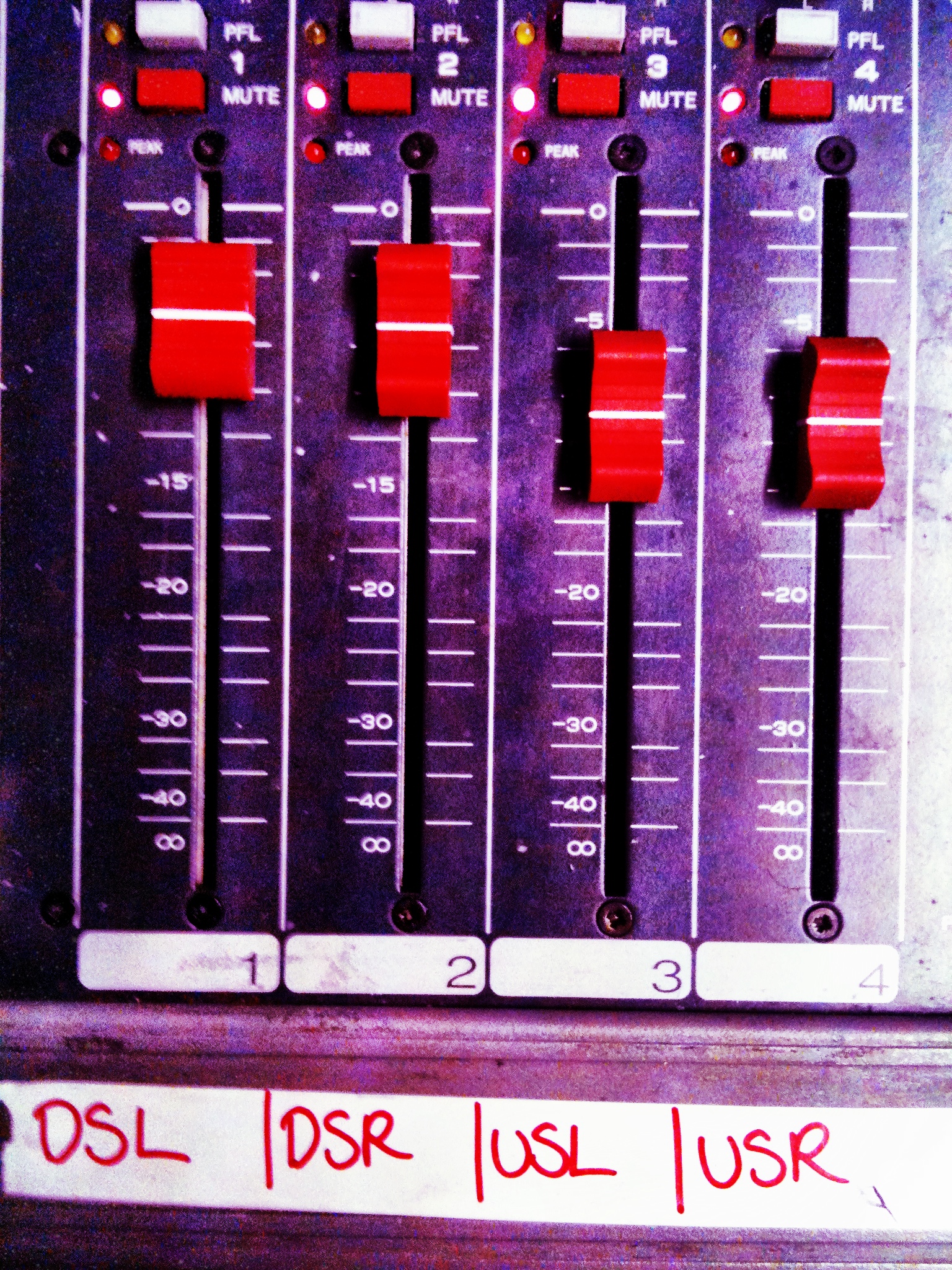There’s nothing like an international project where you’re working remotely to highlight the importance of clear communications – especially when you have to entrust the sound play out to colleagues who admit to knowing nothing about sound.
I recently worked on a work-in-progress show where the company rehearsed and performed in France and I designed the sound remotely from my studio in London. My task was to create the sound design and programme it into the play-out system (QLab) ready for the stage manager to operate. Budget constraints meant it wasn’t possible for me to attend any of the rehearsals or the final performances. I had to create a complex and reactive sound design without watching any of the rehearsals and without seeing the venue, then trust to the company of performers to make it work in the venue without me.
From our first Skype session during the rehearsal period, it was obvious that clear communications would be imperative if I had any chance of my sound design being heard. I discovered very quickly which communication methods are effective, and which to avoid. Based on personal experience, here is my short guide on how to talk to non-techies.
Don’t use jargon
When you spend most of your time working in one field, you take for granted that everyone around you will know what you mean when you say Front of House, or monitors, or reverb. On top of the general sound jargon we use in our everyday audio jobs, each of us also has a whole lexicon of terms that are specific to our area of sound. All of it sounds like a foreign language to a non-technical person. Using language that people don’t understand is frustrating for them and you. Simple requests like “can you get me the tech specs for the venue?” become convoluted back-and-forth email chains as the person you’re talking to doesn’t understand what you need from them.
It’s also worth remembering that different languages and cultures have different terms for equipment, as well as their unique working practises. A jack connector is also called a TRS connector or a BPO connector, depending on where you’re from. I’ve called electrical tape “leccy tape” in New Zealand and “LX tape” in the UK. “Gaffer tape” is either the same as or different to “duct tape” depending on who’s using it. To me, a “howlround” means a feedback loop but both terms will probably mean nothing to someone who’s never had to deal with sound before.
Don’t assume a level of knowledge and don’t condescend
Think back to when you first learned about audio. It’s likely that your teacher introduced the most basic version of each concept first and then once you grasped that, they gradually introduced more complex information until you built up an overall understanding of the topic. Let’s take compression as an example. It’s unlikely that you jumped straight into side-chaining when you learned about compression. It’s more probable that your teacher first explained the threshold, ratio, attack and release controls so that your teacher was confident you were familiar with these key principles before moving on to advanced uses.
When you’re talking to people with less technical know-how than yourself, it’s important to establish what they know and then start at that level and work up from there, in an approachable fashion. It can be frustrating, so remember: it may be an everyday concept for you, but it could be an entirely new idea to someone else. I’ve met many creative people who don’t know the difference between a mono signal and a stereo signal. Think back to the sound experts from whom you’ve enjoyed learning: how do they approach teaching a favourite topic that was new to their audience?
Be clear and concise with your communications
Don’t overwhelm your colleagues with detail. Outline what information you need from them, what actions you need them to take and include just as much background information as is necessary for them to do the job. Making your requests as unambiguous as possible will save a lot of hassle.
Approach all exchanges with professionalism and patience
It’s a challenge when people are asked to take on responsibilities outside their skillset and challenges can breed tension. We all want to get along with our colleagues but when you’re not in the same place as them, adopting a clear, professional, and patient tone is your safest bet. Judging tone in emails can be tricky, and requests made in a casual tone can seem unimportant. I always adopt a formal tone in email communications as my default and schedule Skype and Facetime meetings to work out any issues that I can’t resolve by email.
Figure out what’s possible and let go of the rest
If you’re having to instruct someone with limited technical knowledge to do something, technical, your situation is already not ideal. Let go of the ideal scenario and work towards what’s achievable. They know it’s not ideal, you know it’s not ideal and constantly bemoaning otherwise won’t change that. Work with what you have and be clear about what you can and cannot achieve as early as possible.
Each new project can bring its own communication challenges. Take a deep breath, embrace them and learn from them and you’ll be better prepared for the next one.
